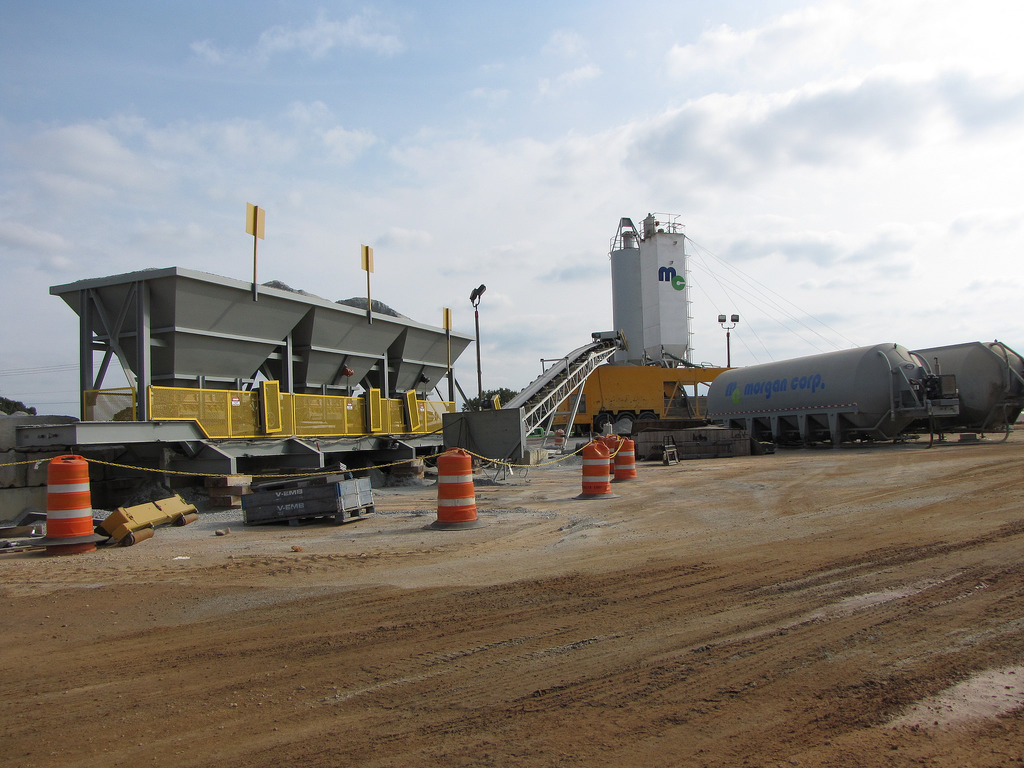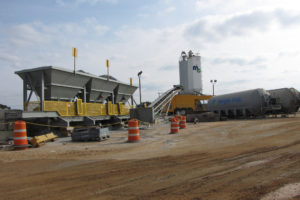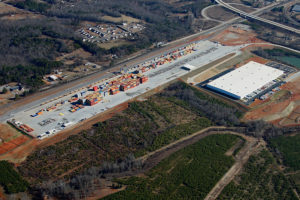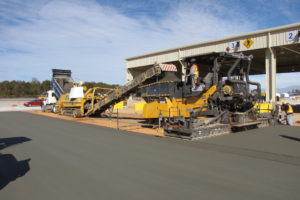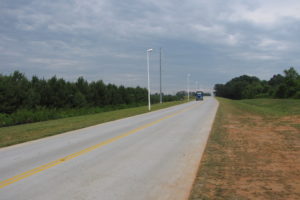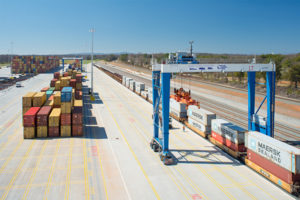South Carolina Inland Port
GREER, SC
The South Carolina Inland Port extends the Port of Charleston’s reach 212 miles inland and provides shippers with access to more than 95 million consumers within a one-day drive. The inland port boosts efficiency for international freight movements between the Port of Charleston and companies located across the Southeast.
Morgan Corp. work included mixing, transporting and placing more than 57,000 cubic yards of RCC paving and 30,000 cubic yards of cement-treated base.
Approximately one half of the pavement area (97,000 square yards) was 13 inches thick placed in 2 lifts and the other half (85,500 square yards) was 9.5 inches thick placed in one lift. Work also included subgrade lime modification to render the silty subgrade manageable after frequent heavy rain events. RCC was mixed in a RapidMix 600 continuous pugmill mixer and placed with two Volvo high-density paving machines. A three-bin blending hopper was used to convey the predetermined aggregate proportions to the mixer hopper. Cement was supplied from two silos feeding directly into the mixing chamber.
In addition to the RCC, CTB and lime modification operations, work included ancillary conventional concrete, railroad crossings, and underground utilities.
Value–Engineered Approach for Fast Construction and a Better Product at No Additional Cost
The subgrade soils at the site consisted of silty Clay and clayey Sand. The pavement design grade was 0.5 percent. The original designs consisted of (1) 14-inch RCC over 3-inch dense graded aggregate base for craneways and handling of loaded containers area and (2) 10-inch RCC over 3-inch dense graded base elsewhere. Based on Morgan Corp’s extensive experience in grading and sitework, the design posed a major constructability problem because of the pavement design slope, expected rain fall in the area, and the soils encountered at the site. There was no chance for the 3-inch base layer to remain stable under construction traffic after rain events. To have a much better chance of completing the project with a reasonable time frame, Morgan Corp designed new pavement sections of equal or higher structural capacity at no additional cost. These value engineered pavement sections included a 6-inch cement stabilized soil base layer instead of the 3-inch aggregate base. The RCC thicknesses were reduced from 14 and 10 inches to 13 and 9.5 inches, respectively. The soil base layer allowed placement of RCC within a few hours after rain events as compared to waiting days after rain events had the “as designed” base was installed.
RCC paving
cement-treated base

